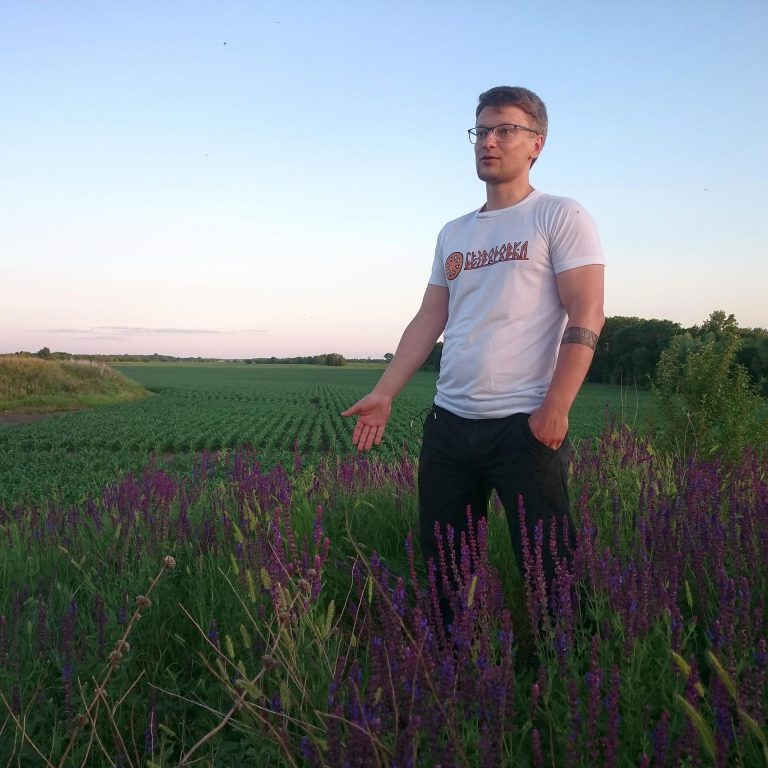Not far from the village of Bezvodivka, which is in Sivershchyna, there is located a valuable historical monument. The Bezvodivka Mounds, the purpose of which is of various assumptions, are up to 4 thousand years old. The local historian Oleksandr Klykavka actively explores these mounds and has his own vision of their history. Oleksandr calls Bezvodivka an observatory, which was used by the ancient civilization to watch the movement of celestial bodies. While the discussion about the functional purpose of the monument continues, Oleksandr Klykavka has done a lot to save the mounds and to popularize them among tourists.
Even in ancient times, people did not limit their view by the earth’s horizon but watched the celestial bodies and tried to comprehend their movement patterns. Prototypes of modern observatories were created in different parts of the world and a system of marks was used instead of telescopes. Due to their precise location, the marks (mounds, stone blocks, etc.) could show the Sun’s and other celestial bodies’ rise and set points on the horizon.
Of course, the construction purpose of such observatories was purely pragmatic. Ancient people were trying to understand those special days of the year when the night or day became longer, when it was better to plant and to harvest, when the rivers would burst their banks, and when it was better to ask gods for a successful year.
At the same time, creating such a large and accurate observation system in ancient times was extremely challenging. First, it was physically difficult to build mounds, dig ditches or transport huge stones without special or any equipment at all. Secondly, it is not easy to choose the exact location and correlation of these objects over long distances. Therefore, the existence of such a monument attests to the fact that a developed civilization once existed on this territory.
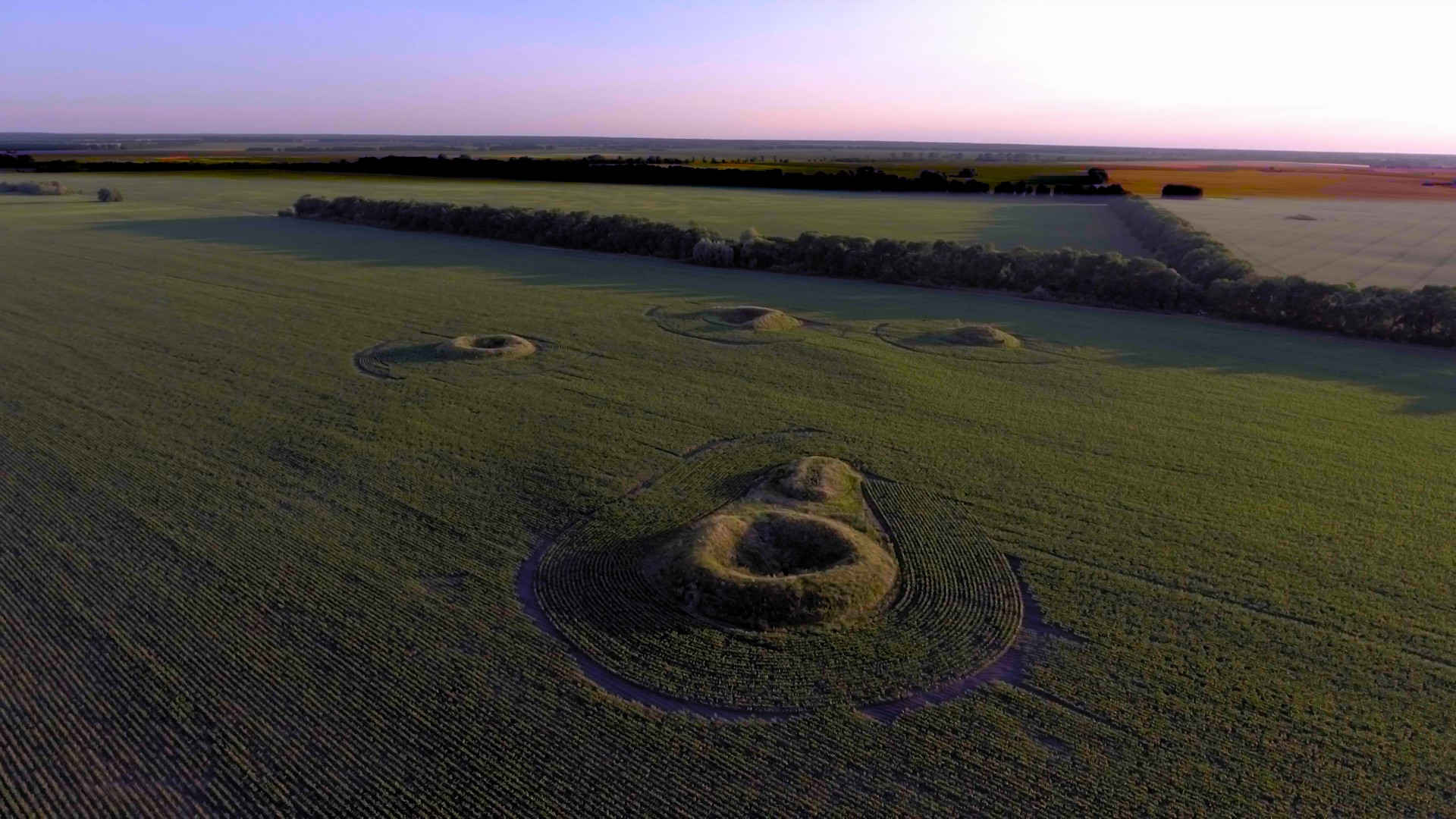
Science that studies similar monuments is called archeoastronomy. This interdisciplinary science developed in the second half of the 20th century and it studies the astronomical ideas that people had in the ancient times and the way these beliefs influenced their culture.
Archeoastronomy studies many historical monuments located all around the world. One of the most famous is the British Stonehenge, and it is on the UNESCO World Heritage List. Discussions regarding the purpose of this stone blocks complex encircled by a ditch continue to this day. Yet the fact that Stonehenge’s main axis is oriented to the sunrise on the day of the summer solstice allowed British astronomer Gerald Hopkins to assume that Stonehenge was a huge astronomical device. It is also believed that this monument could serve as a cemetery or temple. Like the Zorats Carer in Armenia or the Alien Stones in Mongolia, Stonehenge is a megalithic structure typical for 4-3 millennia BC that existed in Europe and later in Asia and Africa.

Bezvodivka
The mounds system that Oleksandr Klykavka calls horizon observatory is located not far from the abandoned village Bezvodivka that is 6-8 km away from Ichnia town.
Archaeological finds show that people inhabited Ichnia region more than 15 thousand years ago. There are thirty mounds dated V-I millennium BC on this territory, and several ancient settlements from this period.
The first record of Bezvodivka dates back to the end of the 18th century. A hundred years later, these lands were passed to Ukrainian industrialist and sugar manufacturer Pavlo Kharytonenko. Kharytonenko used local fertile soils to set up a rich landlord household. Sugar beets were planted here until 1918. That same year, after revolutionary events, Bezvodivka’s economy was ruined and plundered.
During the Soviet era, in 1925, Bezvodivka village revived. In the 70s, however, people began to leave, and in the 1990s, there were no residents left in Bezvodivka. Eventually, the territory of the village was flattened in order to cultivate the land here. Locality, however, wasn’t eliminated. Only a dead-end road was left where once was village and the road is mainly used by agricultural machinery and a cemetery, where people go to look after the graves of their deceased relatives.
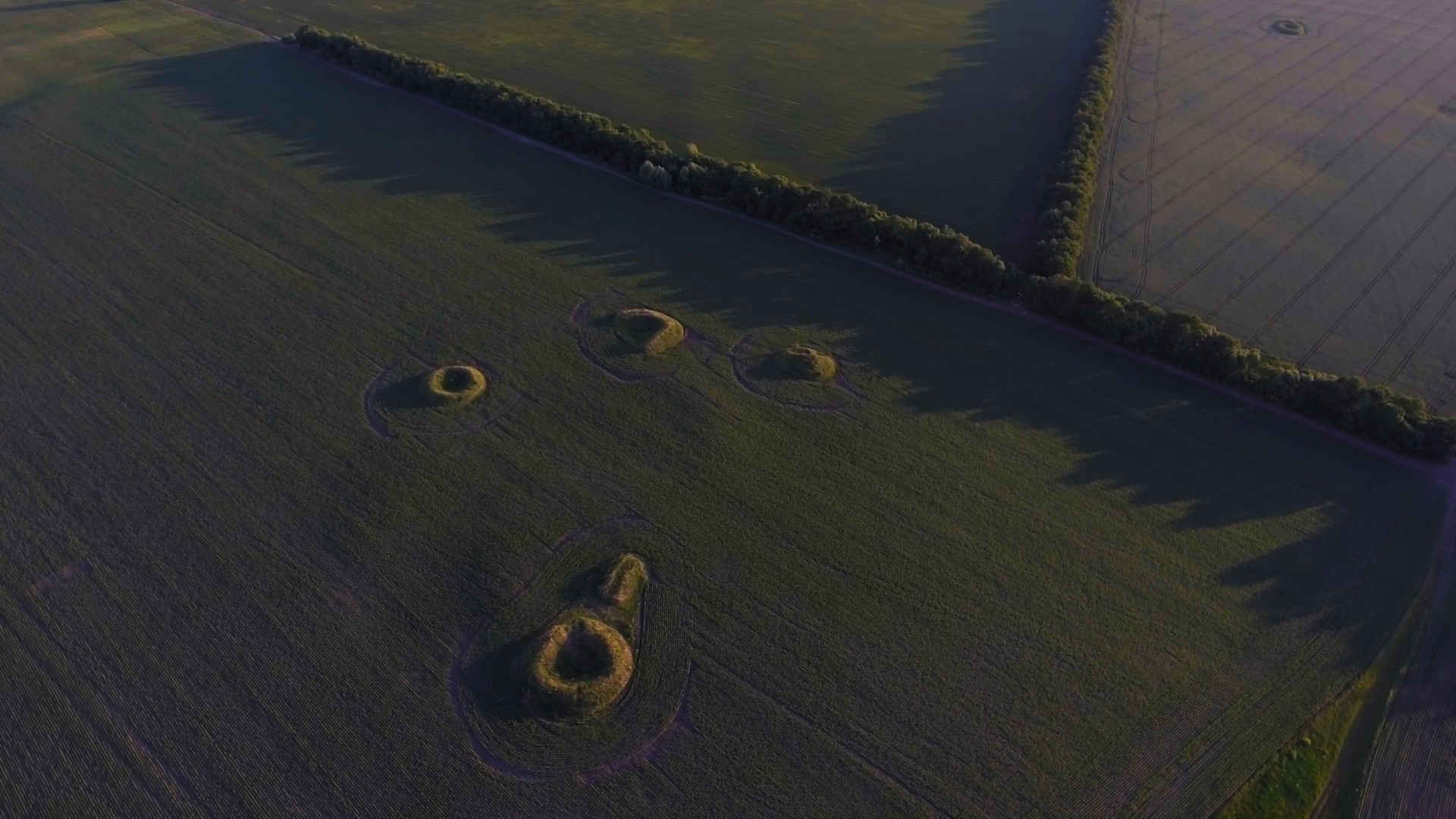
Mounds system is situated on Bezvodivka plateau 170 m above the sea level. The complex occupies around 20 square km. The distance between mounds ranges from 800 m to 4 km, and they are located around the central circle facing all the directions of the world.
Having used the historical and statistical description from 1874 and the modern aerial photography of these places, Oleksandr Klykavka calculated that there were 35 mounds, but only 14 are left up till now. Oleksandr explains that the mounds form a system of near and distant sights, in other words, marks on the horizon. The close-up telescope-sights are equidistant from the complex center and form a circle that has a diameter of 185 meters. Far telescope-sights are located at different distances from the complex center, but in his articles and films about Bezvodivka, Oleksandr Klykavka specifies what mathematical logic he sees in the location of all mounds.
Mound groups have their own folk names. There are two mounds of conical shape left in the north, called Ostrytsi. The central circle of close telescope-sight, as Oleksandr explains, is called Roblenytsi, or Made-up mounds. There are also two parallel ramparts Yaskovi mohyly. The mound Horilyi Did is located between Yaskiv and the Made-up mounds. One of the highest mounds is considered Osychykha.
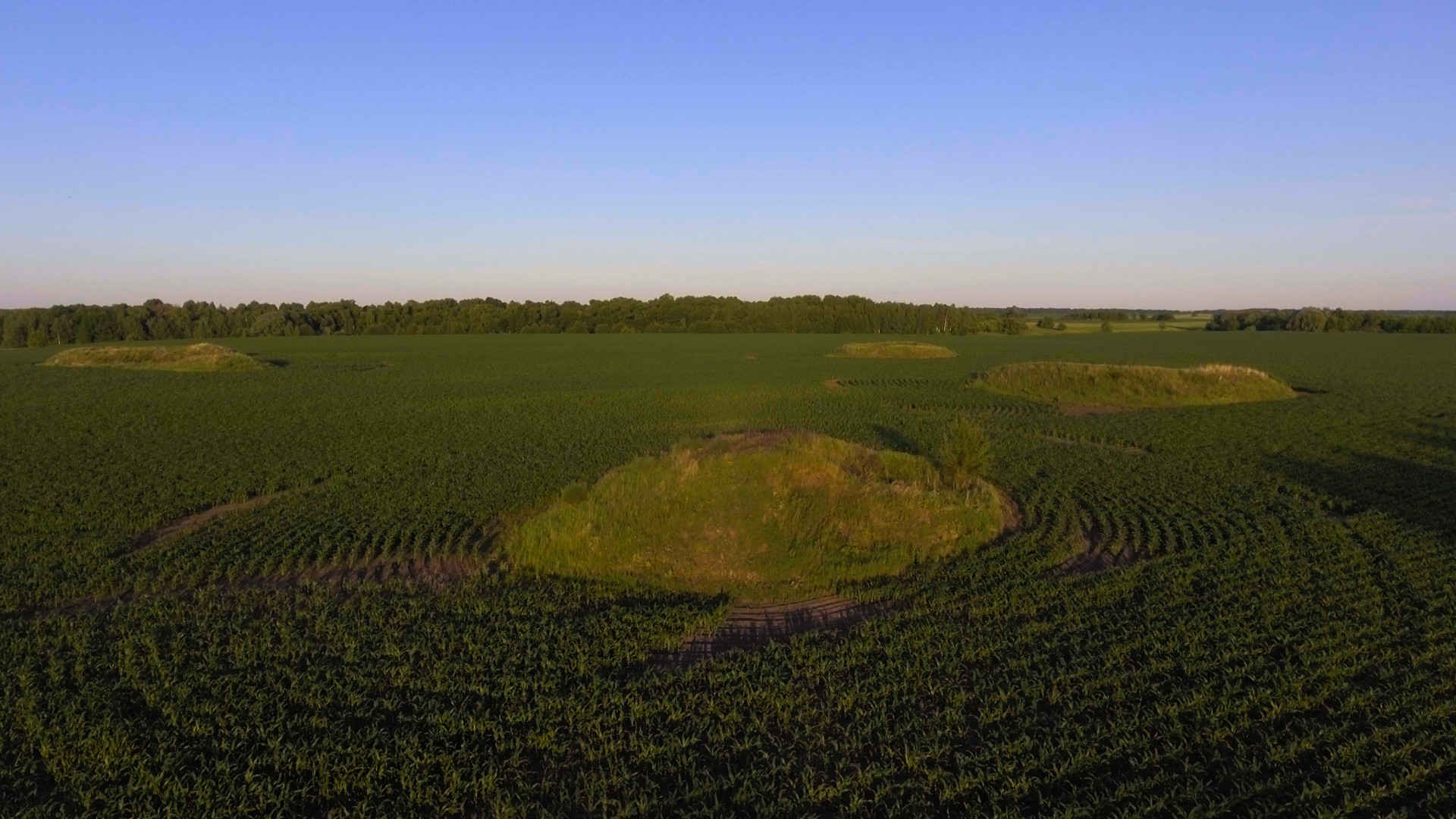
Oleksandr Klykavka says that many mounds were ruined during the period of active farming. Some mounds are shaped like public squares – a pit encircled by ramparts. The rest are just mounds.
Scientists’ and local historians’ points of view regarding the initial purpose of the mounds differ. Some of them call mounds “funeral constructions” and argue about the time of their origin. Some of the retellings say that the mounds served as watchtowers. According to the conclusion of the archaeological land allocation expertise in 2009, these mounds could be left by nomadic tribes in the early Iron Age, and Oleksandr Klykavka believes that in the ІІ—І millennia BC it would be more appropriate to build such a complex for settled tribes, and its function could be dual:
— Settled tribes, farmers should have been monitoring the movement of the celestial bodies and maintain a calendar in order to sow and collect the crops in time. For them, the period, that ran from spring to autumn equinox, when the day was longer than the night, was very important. Why is it a horizon observatory? With the help of the horizon, it is very convenient to mark the east and west displacement points of the celestial bodies. These marks are located at a long distance in order to have a very high accuracy. This accuracy, however, goes as far as a minute of arc. You see, in ancient times, the science, philosophy, and religion were not separated yet. Besides being a good observation point, the mound can also be a burial place for some famous figures.
Whatever the function of the mounds system for ancient people was, now it is a historical monument of local importance that needs protection, preservation, and maybe restoration. In addition to the passing of time, Bezvodivka mounds had been suffering from human economic activity for a long time. They are falling apart because agricultural machines and plows come too close and destroy their foundation. In the summer of 2018, Oleksandr Klykavka reported that because of his numerous letters to the district and city councils a 5-7-meter protective zone was created around the mounds, which was off-limits for the agrarian machinery.
Currently, they are also solving the problem of mounds visibility when the corn grows very tall. It was reported that last summer the owner of the field, where the mounds are located, made paths to them and installed the directional signs.
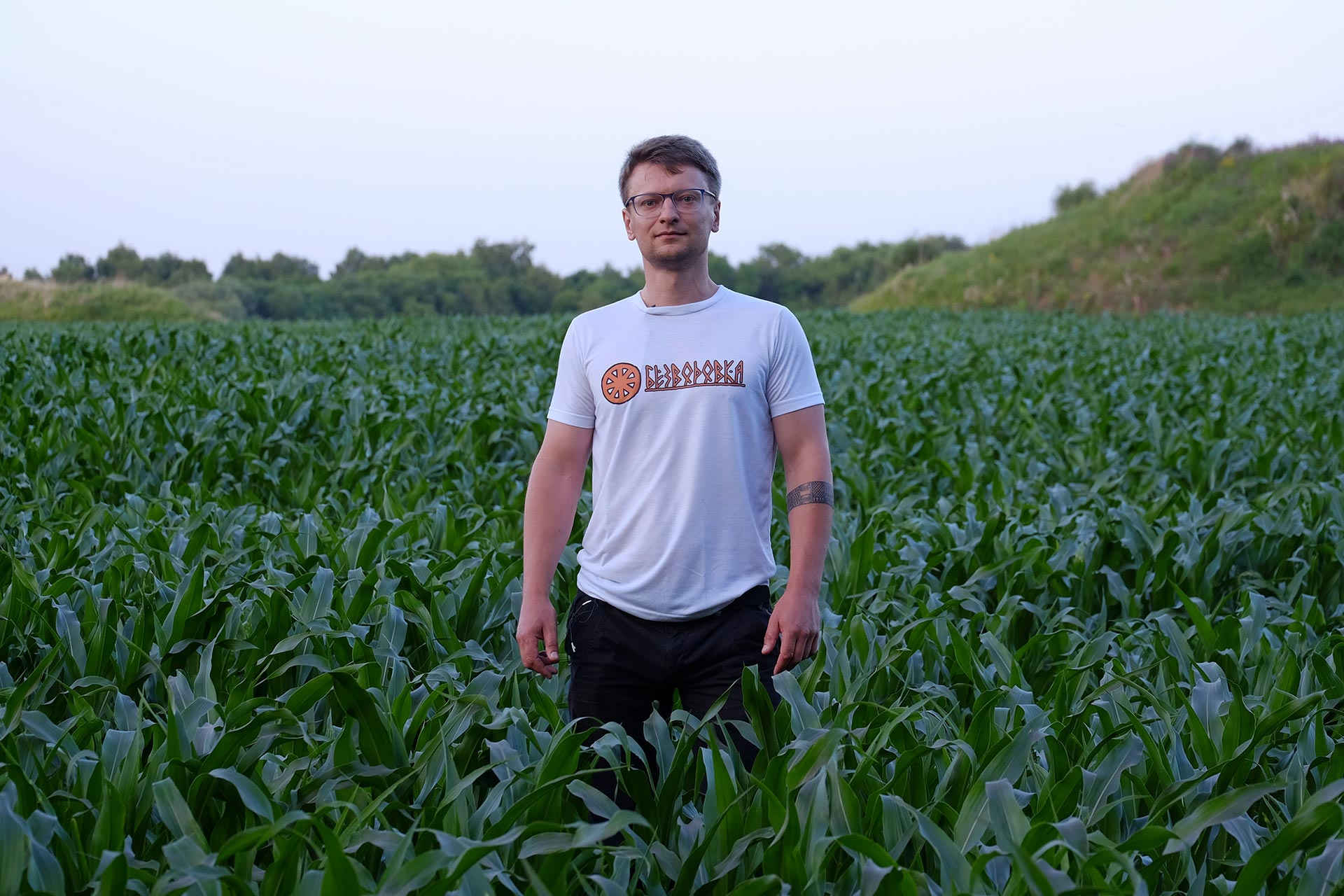
Oleksandr
Having a degree in agrobiology, Oleksandr Klykavka is interested in ancient Ukrainian history. The first time he visited Bezvodivka was in 2012, when he was researching his mother’s small homeland. He recalls the time when the corn plants were two meters high at the site of the archeological complex:
— You could not see the mounds from the road. I was making my way through the slums of corn, climbed the mound and only then could estimate the scope of the whole complex.
Oleksandr studied the old maps of this region that were created by surveyor scientist Friedrich Schubert:
— I saw an interesting group of unknown symbols. What could this be? It did not look like an ancient settlement or mounds. From this point on, I built a theory that it was an ancient astronomical observatory. It was something similar to Stonehenge in England or Arkaim in Russia.
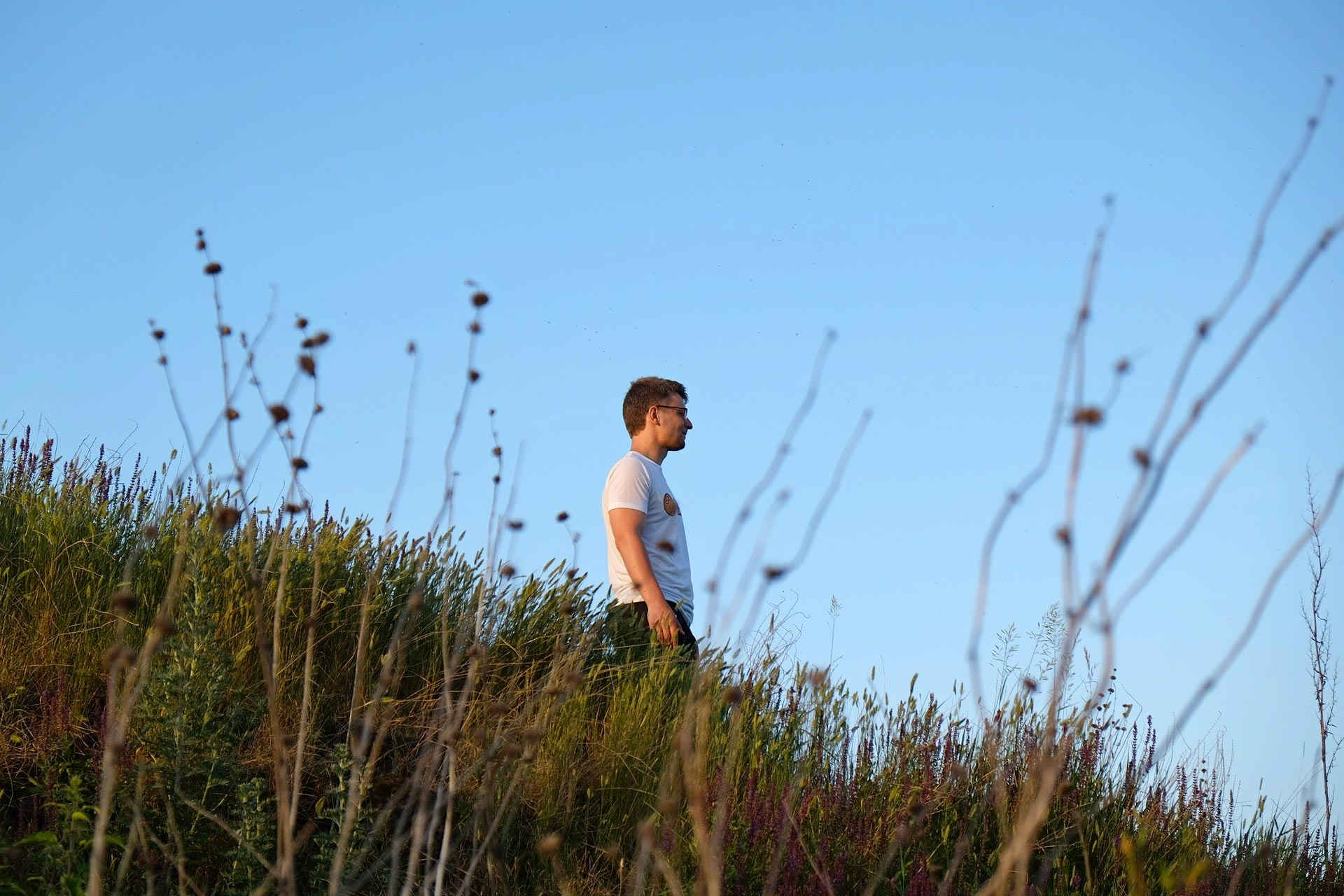
When Oleksandr Klykavka started looking closely at this object, he discovered other complexes not far away that had a certain mathematical and astronomical patterns in their location.
— These mounds are situated on the same azimuths, where the Sun rises on the day of the winter and summer solstice, as well as spring equinox. Moreover, they are also situated at distances that correlate with each other in certain mathematical proportions. For example, the distance from the center of the complex to the western telescope-sight is 830 meters. The distance to the northern group, Yaskiv graves, is twice the size – 1660 meters. In addition, the distance to the southeastern telescope-sight, the Osychykha mound, again times two – 3320 meters.
When Oleksandr gathered enough information related to this this object and to archeoastronomy in general, he felt the need to file this knowledge and make it public. At the end of 2015, he started a historical research project Bezvodivka Observatory:
— I made a simple website about Bezvodivka, where I publish some photos, opinion pieces. Then I shot two short films about this place. One of them was a part of the international archeology film festival in Italy in 2016. Bezvodivka’s logo is a circle and eight marks and I created it by myself. Then I had several publications in Ancient History Encyclopedia in England and one publication in American journal Ukrainian People. In general, I try to tell interesting and outstanding facts about the Ukrainian history, which is not particularly discussed in books and films. It so happens that now more or less interesting period of our history is being limited to one thousand years that starts with the beginning of Kyivan Rus. And how much do we know about more ancient times, for example, what was happening on Ukrainian territory 2-4 thousand years ago?
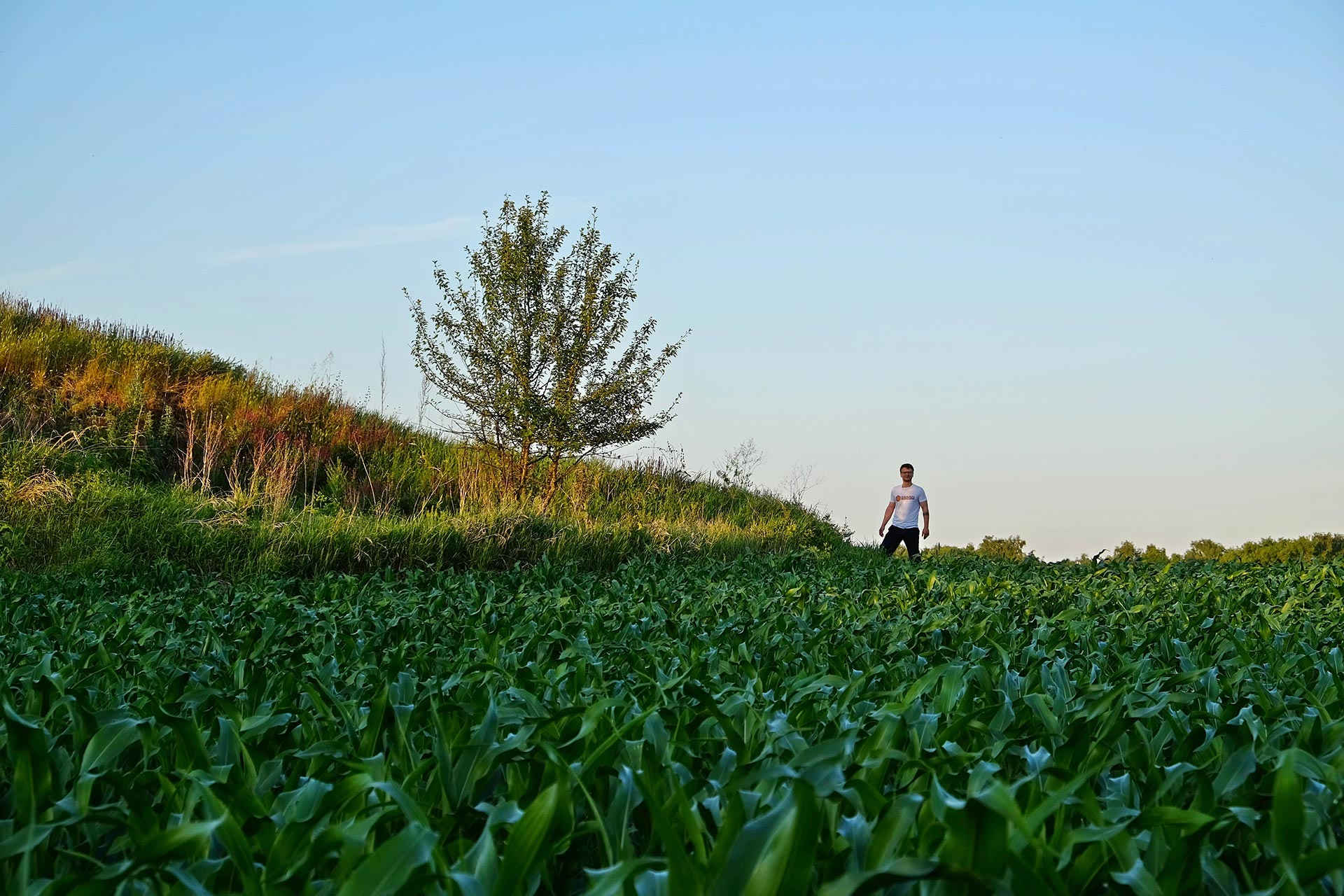
While studying old maps, Oleksandr Klykavka noticed that settlements are located around this area at a certain distance. People never resided in this particular area, which occupies about 20 km. First, there are no water sources here because it is a watershed. Secondly, perhaps, people had some reservations about settling in special places. Kharytonenky violated this, as Oleksandr explains, when they began to build economy there. Then the Soviet authorities that issued land among the residents of Ichnia city repeated the Kharytonenky’s mistake. Thus, the village of Bezvodivka, which existed for 50-60 years, was left behind without a single stone:
— I walked around the near-by fields many times and examined them. The presence of ceramics, beaten jugs was an indication that people lived in a certain place. I have not found a large stationary settlement at the brinks of these ditches yet. In other words, people did not live here. They were just coming here from all the regions to visit it as a special spiritual or administrative center. They could do some meetings and ceremonies here.

Oleksandr Klykavka wants Bezvodivka to become a tourist mecca in his region. He also says we can do very specific steps to make it possible, just like the British did some time ago with Stonehenge:
— Every Stonehenge stone can be compared to the Bezvodivka mound, as they perform the same function: marking where the Sun or the Moon sets and rises. Stonehenge attracts hundreds of thousands of tourists. They are attracted by some kind of mysticism, an interesting mystery, the history behind those stones. Dozens of films are shot, and hundreds of books are written about Stonehenge. We have the same object that can be explored, which can be talked about not only in a homeland but also abroad. We can invite people here to tell them our history.
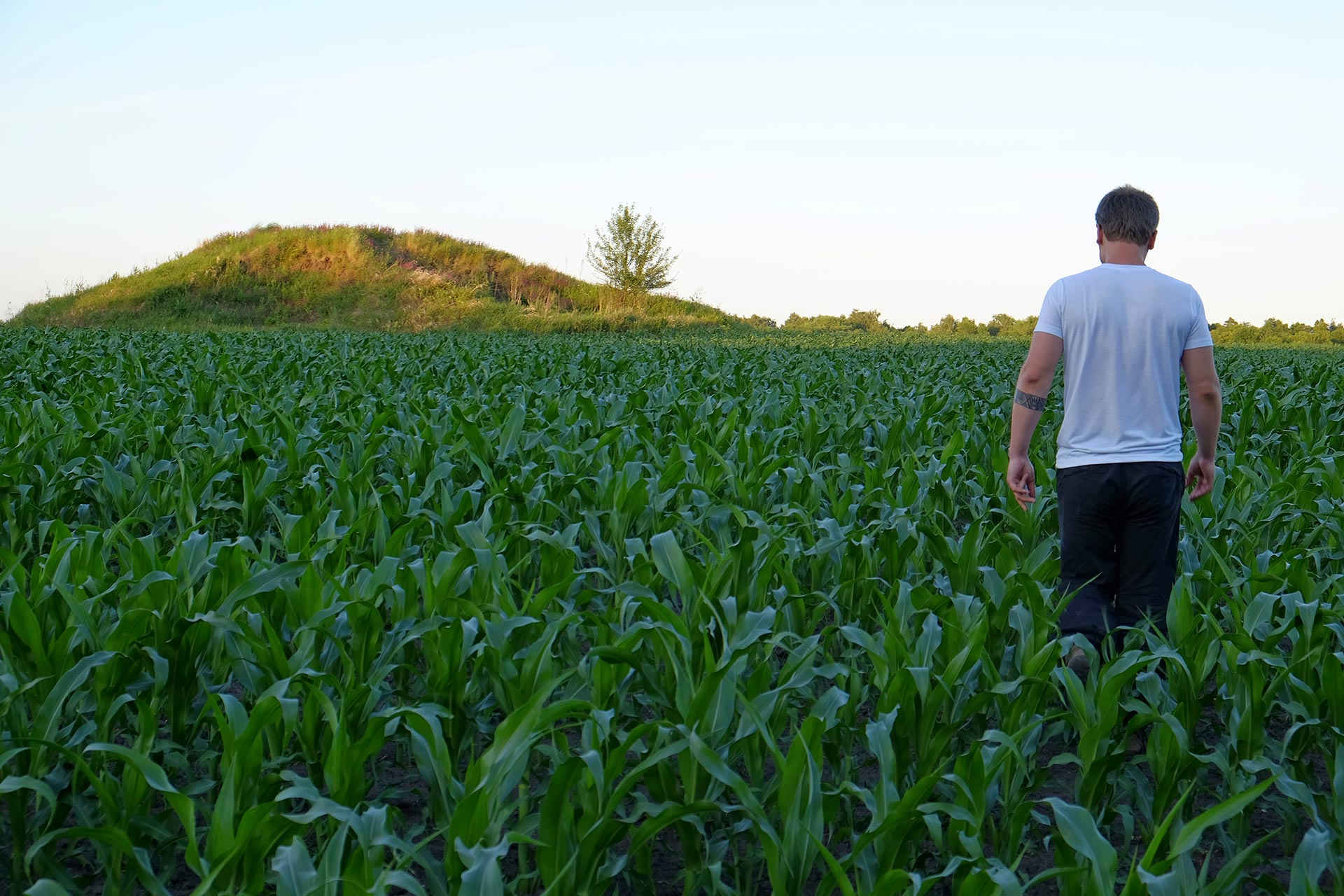
Restoration of burial mounds is a common practice, says Oleksandr. The very same Stonehenge was reconstructed in the 20th century, and in 5 years after the discovery of the Goseck Circle, it was opened for the tourists. The same can be done with Bezvodivka. There is a description of this object from 1874, with the sizes and distances of each object of this mounds group. You can recreate everything in its original form by using other research methods.
— In schools we did not dedicate enough time to more ancient epochs of Ukrainian history, it was out of our focus in general. However, there are many interesting things to research in that field. Since there is a dominating opinion that there was no rational, civilized life at all 2-3 thousand years ago, only a few talk about archeoastronomy in Ukraine. There were just some tribes who were only interested in growing crops and some internal wars, and that there was just a migration of masses from one place to another. In fact, people who lived here did not care about daily bread only, so to speak. They also looked at the stars and the Sun and studied the patterns. They saw that all of this was moving in the celestial sphere for a reason. Therefore, the myths, fairy tales, and calendars were created. They regulated their life cycle.

